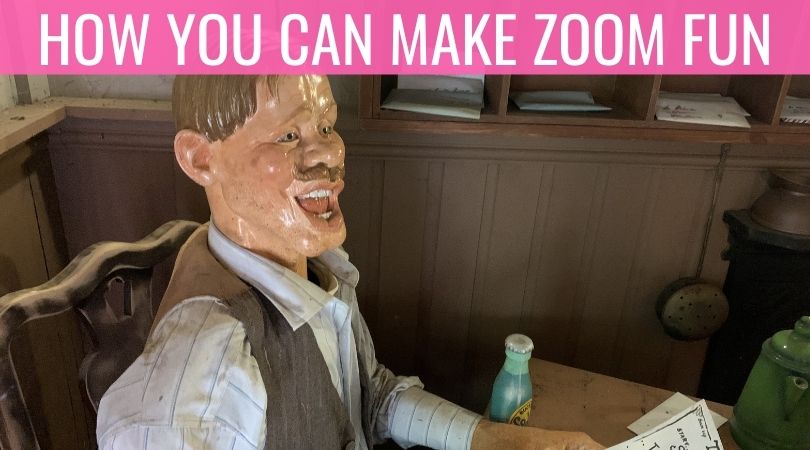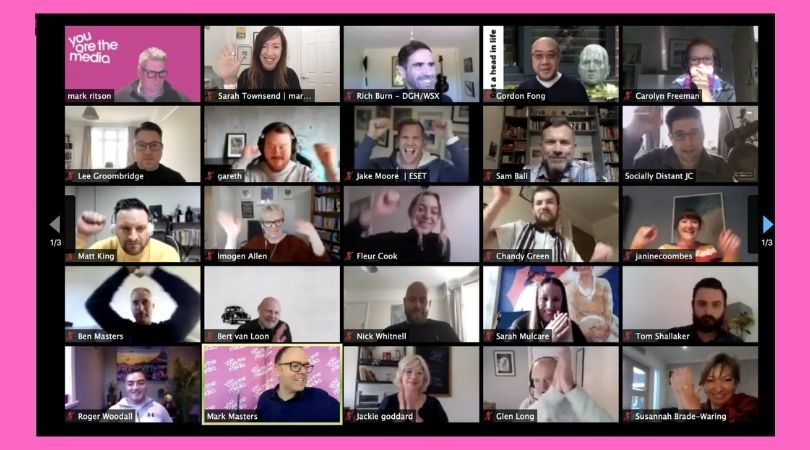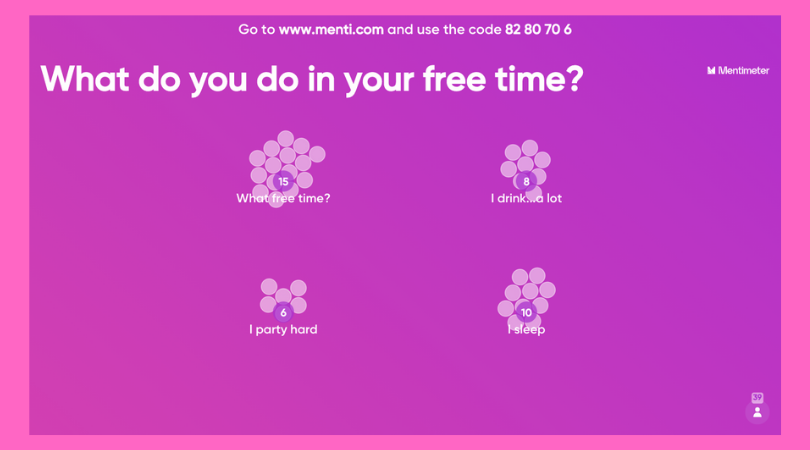How To Make Zoom More Fun

Live video works better when you allow it to become what it is, a format all of its own, borrowing from both TV and in-person events.
When you are running a Zoom event, people should feel like they are a part of what you are creating. It’s “you to them,” where they are not just passively consuming content in a broadcast context but feel very much like they are a part of the whole occasion.

Zoom fatigue is, after all, a very real thing and, particularly with the latest lockdown and regional measures, it’s the responsibility of those delivering events on this and similar platforms to raise their output to the next level.
This article is about creating events that people can participate in and feel a part of. It’s a rundown of what you can do to make Zoom events more fun and is based on things that I’ve implemented and that have worked for me since we took You Are The Media online at the end of March.
Where Organisers & Speakers Are Going Wrong
I look at what’s happening at the moment with online events as being similar to when TV joined radio as a popular broadcast medium in the mid 20th century.
As TV increased in take up, should radio shows have put themselves in direct competition, retaining everything as was but with a camera enabling video broadcast? This is what seems to be happening in 2020 – organisations are looking to replicate exactly what they once delivered in-person, to online. This represents a problem where businesses are lifting what they have always done.
This is what I have seen this year:
Speakers not engaging with their audience and just reading off their script.
Cutting corners in this way does not go unnoticed! Audiences can and do notice, and subsequently feel uninvolved, particularly as they’re not all assembled in a physical space together.
Speakers sharing their screens with presentation slides being all the audience can see.
The speaker is hidden away in a tiny square on the screen and rarely breaks away from the screen share to actually address the virtual room.
Elements getting lost in translation – a direct cut and paste from online to offline does not work.
People enjoy in-person networking events as they provide such a valuable way of socialising. They may not necessarily be interested in say, a local firm that’s the event sponsor addressing the room, but that sponsor has the benefit of being in the same physical space – the floor is theirs. When you try replicating that in the digital space that firm no longer has the run of that floor.
Tech hampering delivery.
I’ve had to present with patchy WiFi and have found myself having to shift to 4G, mid-event. Getting that message on your screen about there being a “problem with your connection” really does throw you and this can have an effect on everyone else. Although, particularly in the early days, people can be forgiving, tech can and does, make or break an occasion.
Speakers communicating without any emotion or enthusiasm.
Most people present from a space where it’s just them and silence. When you take the audience away from the physical space, it can feel like no one’s there. However, people are in the room and they are paying attention.
What Can You Do?
Bringing energy, covering subject matter that appeals to people and recognising that this is your opportunity to be streets ahead of others, is what can drive audiences to you.
If someone has made a commitment to be in your Zoom space, it is your responsibility to be creative and resourceful, delivering in a way that they can’t get anywhere else. When someone else or another business copies your idea or catches up with you, you’ll already be a good few steps ahead.
Here’s what you can do to make Zoom feel like an intimate kind of TV broadcast and, at the same time, bring an element of fun into people’s working weeks and increase their involvement:
STEP ONE – Before
Create the build-up.
The last thing you want to do is be flat about promoting your event. If you want people to be excited you have to create a sense of build-up and anticipation. Use LinkedIn Events to generate interest.
The best thing about LinkedIn Events is that you can see who’s thinking of, or going to, attend. It’s a great device for social proof. For instance, I use social media and the weekly email to share the agenda for upcoming YATM Onlines, demonstrating how we work to a timeline and that our events have pace to them and aren’t open-ended.
Pay attention to everyone who’s coming.
Every person who books onto YATM Online receives a thank you email and a calendar invite. It’s a simple way of acknowledging that you appreciate people choosing to spend time with you.
STEP TWO – When Everyone Is In The Room
Use that little box to your advantage.
When I present, I tend to throw my arms around (it’s all to do with my nerves), this doesn’t work so well when you present on Zoom.
What I do now is gesticulate using the space people can see. For instance, I’ll point at the screen so people think I’m talking directly to them and make sure they can see my hands. Frequent gestures do help online delivery but they have to be adapted for the medium.
Look into the camera lens.
Look at the lens, not at the screen. Make your audience feel like you’re talking directly to them. This is something I’ve noticed YATM Online guests do and it genuinely helps hold an audience’s attention and makes it easier to feel it’s a conversation rather than a one-way broadcast.
Figure a way to break things up.
One reason people get exhausted in Zoom is that there’s too much focusing on one thing. Outside distractions then creep in and we might end up looking at emails and social.
To create pace and maintain people’s attention YATM Online we introduced distinct event sections such as Fleur Cook’s #winning or a song for us all to sing at the end. Introducing webcams can also break things up. For instance, I sometimes show people what’s happening directly outside my window.
Increase the opportunity for interaction.
Similar to breaking things up (above), keep people engaged by finding ways for them to join in. This can be as simple as asking people to share in the chat, where they’re watching from. This makes for an experience that’s better than TV as everyone has chance to take part and be a part of the occasion – something that really matters.
I have also started to use live polls via www.mentimeter.com/ as I like the idea that everyone can see the results in real-time with graphs moving based on what they’re saying. A bit like a 1980s TV clapometer!

Raise your energy levels.
This is one of the most challenging aspects of presenting on Zoom. I know only too well how difficult it can feel when it’s just you creating a tide of momentum from a wall of silence.
It’s off-putting when you’re on gallery view, speaking to rows of faces that maybe you can’t read or that seem to be showing little in the way of emotion or feedback. It pays to remember that a smile gets heightened on Zoom. It’s why your energy levels need to be high enough so they transmit and connect from your space to others’ screens.
STEP THREE – After
Make people who paid to attend, feel they had a VIP experience.
Make people who pay feel special: everyone who pays to attend YATM Online receives an OnDemand video of the event before the end of the day of the event. Having a video to watch back means they can give their full attention to the session and get even more benefit, picking up things they may have missed.
There are some other must-haves that I won’t go into further detail here as they’re covered in depth elsewhere (read this article from UnMarketing on communicating virtually). Tips include using an external microphone, not sitting with the window behind you, not rushing things, not relying on screensaver backgrounds, considering a good quality webcam and, of course, checking your connection.
Let’s Round-Up
2020 has been the year to reimagine presenting online. Once you become comfortable with getting your delivery right for your audience and you have sort of system in place, it’s something you can come back to every time.
Start by thinking of Zoom as less webinar and more TV. Putting thought into the format, delivery and occasion can put your work head and shoulders above that of others, who may still be happy to deliver in a monchrome way that feels faceless and placeless.
Make it more than a passive TV broadcast by giving every single person in your virtual room the opportunity to participate and feel they’re a part of something.
Now presents a very exciting time to take market share from others by delivering in a way that encourages togetherness, belonging and warmth. You don’t need huge budgets, but you need to be creative and test what works with others. 2020 has presented a huge opportunity to discover this untapped space and for you to lead the charge. It is ready and waiting for you.
Podcast: Play in new window | Download


